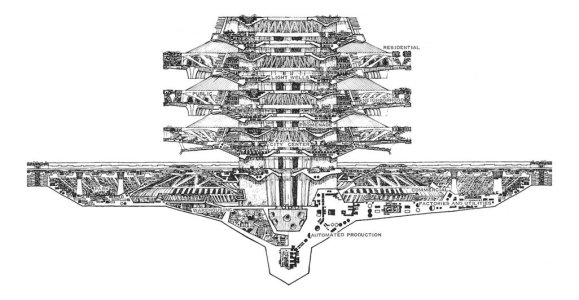It's
theoretically possible for that to happen ... but in order for that to be true, the "smoothness" of the solid surface would have to be almost impossible.
First of all, any form of active plate tectonics would result in mountain upthrust of the crust (somewhere), defeating the purpose of what you're trying to achieve with this postulate. Likewise, we have examples of "solid lid" crust formations (Venus, Luna, Mars) where there are no active plate tectonics and even those world surfaces do not achieve the degree of "smoothness of surface" that you're aiming for here.
So by NATURAL means, there really isn't a path to make a "perfectly smooth" crust on a world large enough to retain a "shallow" ocean over the entire surface such that it can qualify as a (swamp) water world.
ARTIFICIALLY ENGINEERED to "level the mountains and fill in the valleys" of the surface crust in order to remove any irregularities in elevation COULD yield the result that you're looking for ... but such a world would need to be "geologically DEAD" in order for the surface modifications to persist over extended times (on geologic scales). Note that this would mean that there is no recycling of materials between the outer crust and the mantle (because, no plate tectonics) which likewise means No Volcanism (pretty much by definition, for a perfectly "smooth" world with uniform shallow sea/swamp everywhere). As far as we know (@TL=7-8), a lack of plate tectonics recycling materials between the lithosphere and mantle means that EVERY biological process on the surface turns into a "runaway" type situation, because there are no counterbalances to anything that biochemistry is producing ... since there are no "sinks" taking byproducts (excess carbon, etc.) out of the surface chemistry mix. Likewise, there are no "inputs" from subsurface sources of energy and chemistry going on (see: geologically DEAD) so there are no locations that are resource/energy "rich" enough for life to gain a foothold based on planetary energy sources, rather than stellar radiation energy sources.
In other words, the amount of WORLD ENGINEERING required for such an outcome to be possible are both excessive AND inherently unstable once life (of any variety) gets introduced into the picture.
If you increase the average depth of the world ocean to be more than 10+ meters, things start getting more practical (and therefore, possible) again. But an excessively shallow (10 meters or less EVERYWHERE) ocean world type setup is ... exceptionally unlikely ... to occur naturally. There are just "too many coincidences" needed in order to make it happen.
However, if you modify your assumptions ... slightly ... it would be possible for a world tidally locked to the star (one side always day/one side always night) to have a shallow water "ocean" on the day side and a glacial ice "candy shell" covering on the night side. Basically more of an "eyeball world" type of situation. This is one of the proposals for what a world, with water, would probably look like (if it existed) in the TRAPPIST-1 star system. The ocean almost certainly wouldn't be 10 meters or less deep, but you get the idea.


